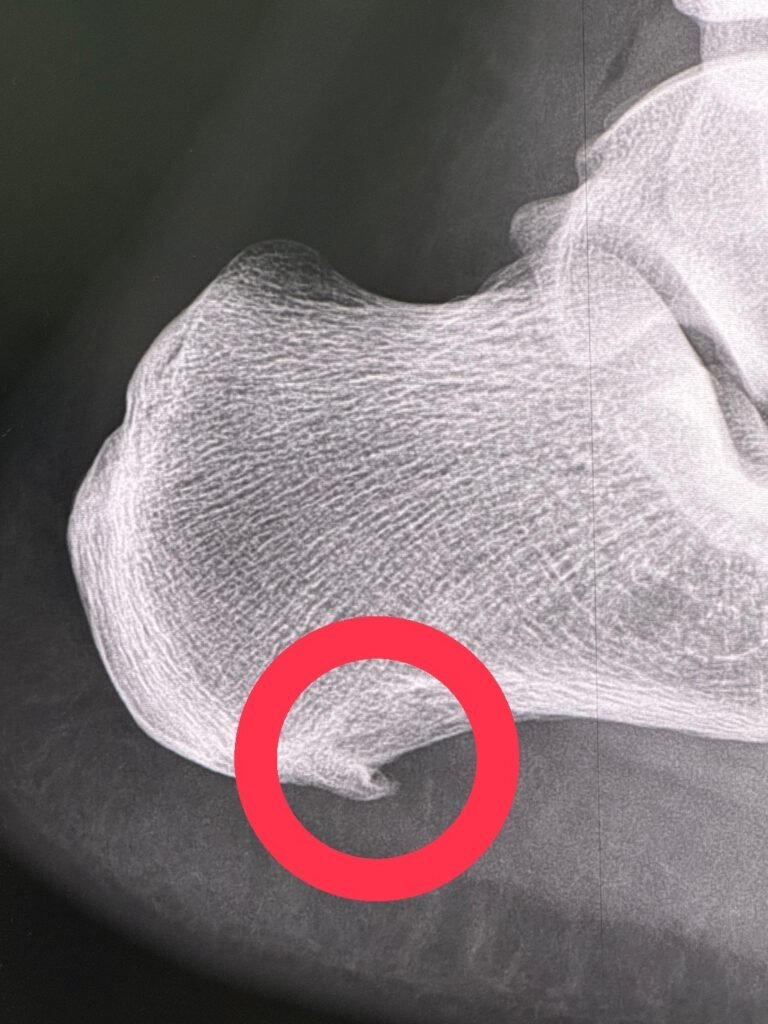Plantar fasciitis is a common cause of heel pain. It affects many people around the world, including those in Thailand. This condition happens when the tissue at the bottom of your foot gets inflamed. It connects your heel bone to your toes.
Doing daily activities that involve standing or walking on hard surfaces can make it worse. Wearing the wrong shoes can also add to the pain. Knowing what causes plantar fasciitis and its symptoms helps manage the pain better. This can improve your life quality.

Key Takeaways
- Plantar fasciitis involves inflammation of the tissue connecting the heel to the toes, causing heel pain.
- Prolonged standing, improper footwear, and certain activities can worsen the condition.
- Identifying the plantar fasciitis causes symptoms aids in effective foot pain management.
- Recognizing symptoms early can lead to quicker plantar fasciitis relief and improved foot health.
- Informed strategies are key to improving foot health and reducing discomfort.
What is Plantar Fasciitis?
Plantar fasciitis is a common issue that causes a lot of discomfort, especially in the heel. It happens when the plantar fascia, a thick tissue at the foot’s bottom, gets inflamed. Knowing what plantar fasciitis is helps us understand how it affects our daily life and health.
Definition and Overview
Let’s dive into the plantar fasciitis definition. It’s when the plantar fascia gets inflamed, causing heel pain. This usually happens to people who put a lot of stress on their feet, like from running or standing a lot.
Anatomy of the Foot
Understanding heel pain causes starts with knowing the foot anatomy. The plantar fascia is a web-like ligament that connects the heel to the foot’s front. It helps support the foot’s arch and absorbs shock when you walk. If it gets inflamed, it can cause the sharp pain of plantar fasciitis.
Here’s a quick look at the parts of the foot involved in plantar fasciitis:
| Component | Function |
|---|---|
| Plantar Fascia | Supports the arch and absorbs shock |
| Heel Bone (Calcaneus) | Attachment point for the plantar fascia |
| Foot Muscles | Provide stability and mobility |
| Ligaments | Support the foot structure |
By understanding foot anatomy, we see why plantar fasciitis happens and what causes heel pain. This knowledge helps us diagnose and treat it better.
Common Causes of Plantar Fasciitis
Knowing the main plantar fasciitis factors helps in spotting and stopping this common foot problem. This part looks at the biomechanical issues, activities, and shoe choices that lead to plantar fasciitis.
Foot Mechanics
How your foot works is key to getting plantar fasciitis. Issues like flat feet, overpronation, and high arches put too much stress on the plantar fascia. This leads to a foot arch strain. These problems change how weight is spread in your foot, putting pressure on certain spots.

Activities and Occupation
Some jobs and activities make you more likely to get plantar fasciitis. Teachers and factory workers who are on their feet a lot face more occupational risks. Runners also often get foot arch strain from the constant stress on their feet.
Improper Footwear
Shoes are key in either helping or making plantar fasciitis worse. Shoes without enough shoe support or cushioning don’t soak up shock well. Wearing high heels or shoes with bad arch support for too long can make this condition worse. So, picking the right shoes is vital to fight these plantar fasciitis factors.
Plantar Fasciitis Causes Symptoms
Understanding how plantar fasciitis starts is key to managing it. Standing a lot, gaining weight, or wearing the wrong shoes can cause it. Knowing these triggers helps people stop or lessen the pain.
Standing a lot, especially on hard floors, strains the plantar fascia. This can lead to small tears and swelling. People who stand a lot, like teachers or sales staff, often get plantar fasciitis. Being overweight also puts more pressure on the foot’s arch, making it harder on the plantar fascia.
Wearing shoes that don’t support your feet is another big factor in foot pain from plantar fasciitis. Shoes without good arch support or cushioning don’t absorb shock well. This repeated strain causes heel pain and stiffness in the morning.
Here’s a closer look at how different causes relate to plantar fasciitis symptoms:
| Cause | Symptoms |
|---|---|
| Prolonged Standing | Heel pain, especially after long periods of inactivity |
| Weight Gain | Increased foot pain, difficulty walking |
| Unsupportive Footwear | Arch and heel pain, morning stiffness |
Risk Factors for Developing Plantar Fasciitis
Many things can make you more likely to get plantar fasciitis. Knowing these risk factors helps in preventing and treating it early.
Age and Weight
As you get older, your plantar fascia loses elasticity. This makes older people more likely to get plantar fasciitis. Being overweight also adds pressure on your feet, which can lead to heel pain. Staying at a healthy weight can lower this risk.
Athletic Activities
Athletes and those who are active face a higher risk of plantar fasciitis. This is because of the strain and small tears from activities like running and jumping. Wearing the right shoes and training properly can help prevent this.

Underlying Medical Conditions
Some health issues can make getting plantar fasciitis more likely. For example, people with arthritis or diabetes are at a higher risk. These conditions affect foot health and how well your body moves. Managing these conditions can help lower your risk of plantar fasciitis.
Recognizing the Symptoms of Plantar Fasciitis
Knowing the signs of plantar fasciitis early helps a lot. It’s key to spot heel pain, morning stiffness, and walking trouble. These signs are important for easing pain and stopping soreness.
Heel Pain
Heel pain is a big sign of plantar fasciitis. It hits the bottom of the heel and can spread to the arch. Standing a lot or sitting still makes it worse.
Morning Stiffness
Many people with plantar fasciitis feel stiff in the morning. The first steps can be very painful. This happens because the plantar fascia gets inflamed when you rest.
Difficulty Walking
Walking gets hard with plantar fasciitis. The inflamed plantar fascia and sore heel make you change how you walk. This can make daily tasks tough and get worse if not treated.
| Key Symptoms | Description |
|---|---|
| Heel Pain | Sharp pain at the bottom of the heel, especially after long periods of sitting or standing. |
| Morning Stiffness | Severe pain in the first few steps taken in the morning due to plantar fascia inflammation. |
| Difficulty Walking | Altered gait and pain exacerbated by walking, affecting day-to-day activities. |
Understanding these symptoms is key to acting fast and managing plantar fasciitis well. Spotting these signs early and getting the right treatment helps ease pain and lowers the chance of long-term soreness.
How is Plantar Fasciitis Diagnosed?
The first step in diagnosing plantar fasciitis is a thorough physical check-up. This is key to spotting tenderness and swelling in the heel. These are signs of plantar fasciitis. The doctor will also ask about your health history and daily life to understand your condition better.
Physical Examination
A detailed check-up involves finding out where you feel pain in your foot. The doctor will press gently on the plantar fascia to see if it hurts. They’ll also watch how you walk or stand to see if there’s anything unusual that might have caused plantar fasciitis. This check-up can often lead to a first diagnosis.
Imaging Tests
If the first check-up doesn’t give clear answers or if the doctor thinks there might be something else going on, imaging tests might be needed. An ultrasound can show the soft tissues of the foot, helping to see inflammation or tears in the plantar fascia. Sometimes, an MRI is used to get a closer look at the foot’s structures. This helps to rule out other problems like stress fractures or heel bone issues.

| Diagnostic Method | Purpose | Common Uses |
|---|---|---|
| Physical Examination | Assess tenderness, swelling, and foot mechanics | Initial plantar fasciitis diagnosis |
| Ultrasound | Visualize soft tissues, detect inflammation or tears | Confirming plantar fasciitis, evaluating severity |
| MRI | Detailed view of foot structures, rule out other conditions | Complex cases, unclear physical exams |
When to See a Physiotherapist
If you have heel pain that won’t go away with home remedies, think about seeing a physiotherapist. Getting help early is important for treating plantar fasciitis.
A physiotherapist can check you out and make a treatment plan just for you. This plan will include plantar fasciitis exercises. These exercises will help make your foot muscles stronger, increase flexibility, and help you heal.

Signs it’s Time to Visit a Physiotherapist:
- Persistent heel pain despite home treatments
- Difficulty walking or maintaining daily activities
- No improvement in pain after several weeks
- Recurrent pain that impacts quality of life
Seeing a physiotherapist can also help fix other issues that cause heel pain. With physiotherapy for heel pain and specialized foot care, you can get better and avoid more problems.
| Benefits | Physiotherapy for Heel Pain | Specialized Foot Care |
|---|---|---|
| Enhanced Mobility | Yes | Yes |
| Strength Development | Yes | Depends on Plan |
| Expert Guidance | Yes | Yes |
| Preventative Measures | Yes | Yes |
Seeing a physiotherapist is a smart move towards feeling better. It means you get the right support and specialized foot care. Recognize when you need help to live without pain.
Conclusion
Understanding plantar fasciitis is key to managing pain and preventing more problems. Knowing the causes helps you make a good foot care plan. Spotting symptoms like heel pain early can help keep your feet healthy.
Things like age, weight, sports, and health issues matter too. Getting the right treatment early can make a big difference. There are many ways to treat plantar fasciitis, from home remedies to surgery.
Working with doctors and therapists helps make a good treatment plan. Knowing when to get help is crucial for managing plantar fasciitis. A good foot care plan relieves pain and boosts your overall health. This article gives you the info you need to fight plantar fasciitis and keep your feet healthy.





